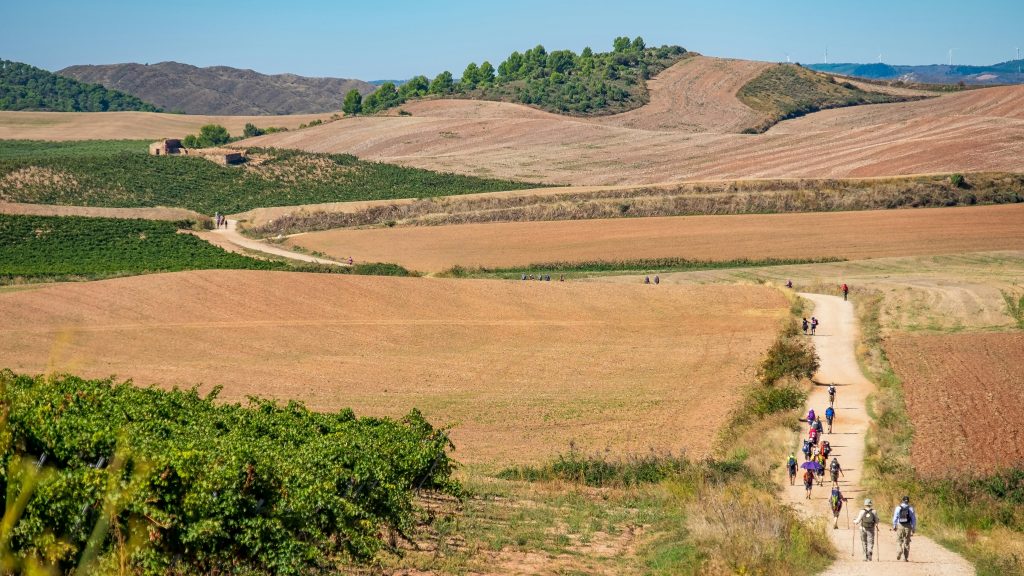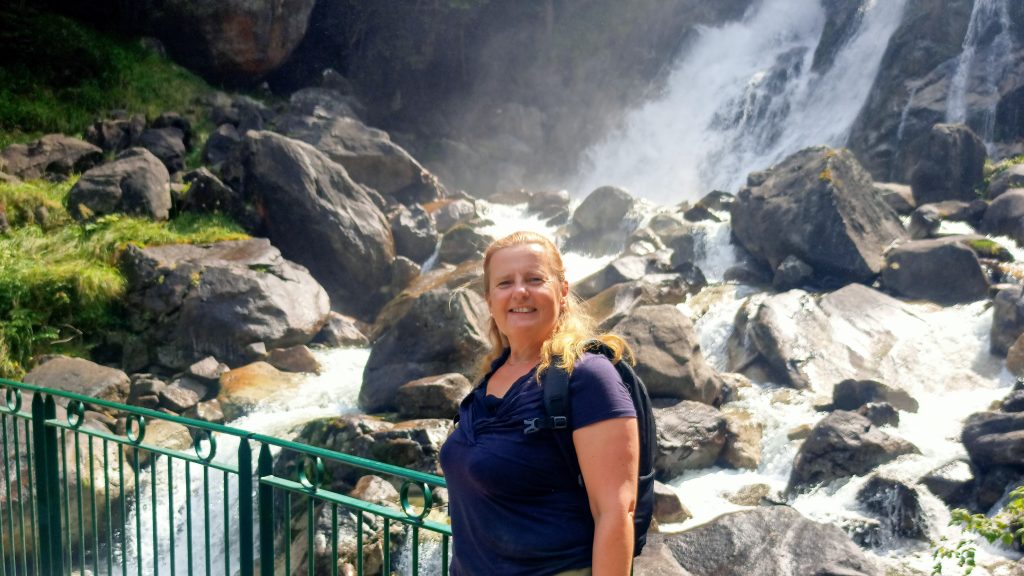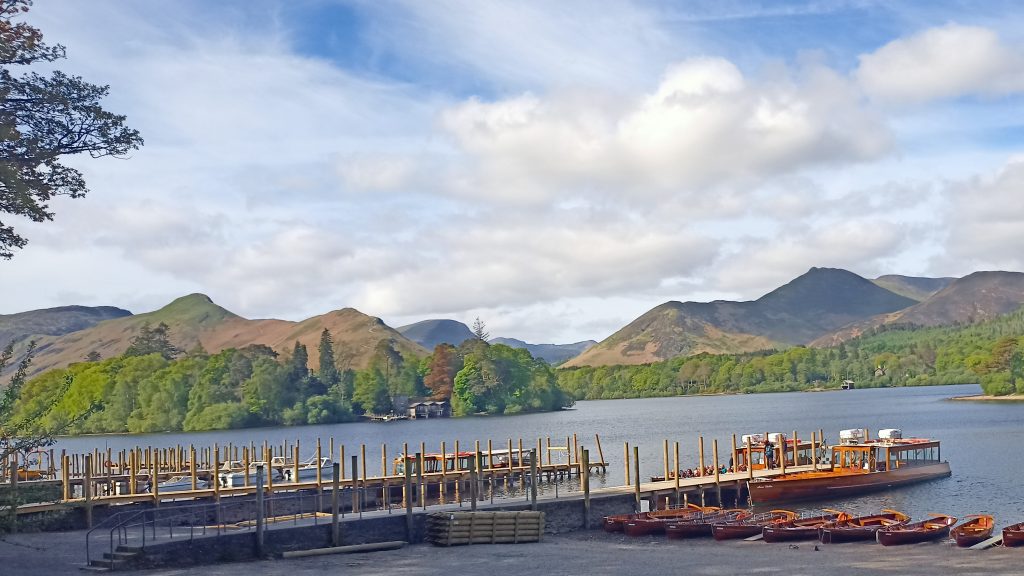My latest clients are looking for a walking holiday in Europe. Specifically, they want to walk the Camino de Santiago, but only have a week to do it. Added to that they are not super fit, don’t want to carry their luggage on their back and want at least a modicum of comfort (if not luxury) in their accommodation.
The Camino de Santiago is a pilgrimage trail which finishes in Santiago de Compostelle, in northern Spain, and has several different routes some as long as 800+km. The route is one of the oldest pilgrimage routes in the world, with earliest records dating back to the 9th century (AD). The pilgrimage started when the remains of Saint James were discovered in Santiago. Whilst the origins of the pilgrimage are strictly Christian, many pilgrims walk the route as a way to reflect on modern life and find themselves, rather than a religious undertaking.
Walking holidays are becoming more and more popular. The Camino de Santiago registered 55000 pilgrims in the year 2000, by 2024 that number had risen to just shy of half a million. That is a staggering number of people spending their vacation time walking in the footsteps of others.

Other popular walking routes and areas have seen similar rises. Estimates for the Cinque-terre trail are now running at 2.5 million visitors a year (though I am not sure how many of those walk more than a few km), and the lake district in north-west England, where the primary activity is hill walking, registers an unbelievable 18.1 million visitors a year (2023 figures).
Why chose a hiking vacation?
There is something innately human about walking. It is what our bodies are designed to do. And in the modern world with all the many demands on our time and our concentration, walking can provide a way to get away from life and reflect. A sort of meditation if you will. Whilst people in physical jobs perhaps need to spend their vacation time relaxing on a sun bed, those of us who spend far too much time sitting down in front of a screen want to spend vacation time moving.
There are many benefits to a walking vacation. Obviously, fitness is one of them, walking for 20km a day is bound to help your fitness levels in a way that a sunbed can’t. Mental health is another. Walking reduces symptoms of anxiety and stress and the satisfaction of completing a hard walk can boost self esteem and confidence. It can also be fabulous for improving sleep. Long days of strenuous walking in the open air are generally conducive to a good night’s sleep. A hiking tour is also a good way of preventing the weight increase that often comes with a great vacation. I’m speaking from experience. Food is one of my great loves, and I over-indulge when on vacation, but if I am walking every day that indulgence doesn’t show on the scales.
I find that whilst my inner voice is constantly talking nineteen to the dozen at me, a long hike turns down the volume and sometimes mutes it altogether. The harder the hike the more this is true. I concentrate on where I am putting my feet, and breathing properly so my lungs don’t hurt, occupying the inner voice completely.
The other benefit to a hiking vacation is the scenery. Yes, you can get some good views by driving up mountain passes or taking a train across the Alps, but the very best views are reserved for those who walk. The view from the top of a mountain that you have just walked up is incomparable. Even if you chose to take a less strenuous route you will come across meadows, waterfalls, and bucolic scenes that cannot be experienced any other way.

Why is Europe a great choice for a hiking tour?
Walking in Europe, especially long-distance or multi-day hikes, is often considered more accessible than in many other parts of the world.
Countries like France, Germany, Switzerland, and Spain have thousands of marked routes—from local paths to transcontinental networks. There are 12 European long distance paths, or E-paths, which traverse several countries in Europe. And each country has its own system of walking paths. The most well known is probably the GR routes. GR stands for Grande Randondée, Randonée being the French word for a hike. The GRs not only cover the most popular walks in France, but also Spain, Belgium and the Netherlands. The paths are well marked, with a red and white blase showing the way.
Swtizerland is of course a great choice for hiking. It has a vast network of routes coordinated by Schweizer Wanderwege (Swiss Hiking Federation), known in French as Sentiers Suisses and in Italian as Sentieri Svizzeri. Italy, Austria and Slovenia are other popular destinations, each will well maintained and well signed routes.
Accommodation on a hiking vacation
Another advantage of hiking in Europe is the accessibility of accommodation. Many trails pass through towns and villages every 10-20 km giving access to a number of lodging options, from Bed and breakfasts to hotels and hostels. Walking on the mountain ranges can also give access to refuges for the night. This makes Europe an ideal destination for those who want to walk without carrying camping gear, and who want to enjoy a hot meal and a bed each night.
If you are walking one of the popular routes, such as the Camino de Santiago or the Tour du Mont Blanc, you can even get luggage transfer service to take your suitcase from one point to the next leaving you just a day pack for walking. This is what I shall be recommending to my clients.
Another option, and one which I personally favour, is to find accommodation in a central point and do day hikes. On one of our latest trips we chose Keswick in the lake district as our fixed point, for its accommodation and restaurant options and then took hikes from there, using the boat service to get across the lake to Catbells, and driving to nearby Rydal to walk to the caves and over to Grasmere.

Last year we chose the French Pyrenées, basing ourselves in Lourdes (a mistake as it turned out and I certainly wouldn’t recommend it) and walking to waterfalls from Cauterets (which would have made a much better base) and the mountain top lac d’Isaby from Hautacam.
Can Luxury and hiking be mixed?
The image we often have of hikers is that of people carrying their packs and staying in rustic, basic accommodation. That doesn’t have to be the case. By choosing your accommodation and location carefully you can enjoy a hiking vacation whilst still enjoying 5* luxury benefits. What better than a day hiking followed by a visit to the spa and a Michelin stared dinner?
I recently planned a similar trip, using two different luxury hotels in Switzerland, each with a different feel. The Bürgenstock resort in Lucerne is the epitome of luxury. With its award winning spa, fabulous restaurants and outstanding views over the lake, it is the perfect place to relax after a days hiking. There is a choice of 98 hikes, with a distance of between 10 and 20km, in the Lucerne area so its sure that there are several that would appeal.
Then I recommended moving to the Alpina hotel in Gstaad, with its outstanding service in a postcard of a town it really is a dream come true. With 78 routes to choose from, including the Lauenen – Geltenhütte round trip with its superb waterfalls (waterfalls are my weakness when it comes to hiking) you are spoilt for choice.
Best hiking vacation Europe
When it comes to the question which is the best hiking vacation in Europe, I’m not sure there is an answer. In reality the wellbeing you will feel from hiking every day in a beautiful environment will be similar whether you walk the Camino the Satiago or go hiking in the lake district, England. You will return from your vacation feeling refreshed and with a sense of inner calm that a sunbed simply cannot deliver.
Whether it is the simplicity and authenticity you find in the Pyrénées, the awe inspiring views of the alps or the rugger of the Dolomites there are enough hikes in Europe to keep even the most enthusiastic hiker happy for a century.
If you are planning your first trip to Europe then make sure your read How to plan a trip to Europe: the 3 essential first steps
If you need help with planning your trip then check out our services
If you have any questions about travel itineraries in Europe then drop us a line. We are happy to help.
If you want more tips and ideas for visiting Europe then FOLLOW ME ON INSTAGRAM
